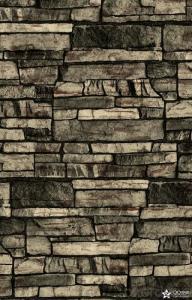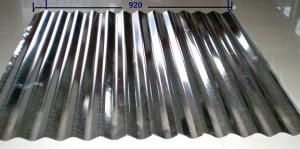color bond surface coating steel plate--XY025
- Loading Port:
- China Main Port
- Payment Terms:
- TT OR LC
- Min Order Qty:
- -
- Supply Capability:
- -
OKorder Service Pledge
OKorder Financial Service
You Might Also Like
1. Color bond surface coating steel plate :
2.More than ten years experiences, the products are sold to the domestic city and some international cities we strivc to develop production of color coating steel plate the plating (aluminum )
zinc steel. Coil cheickness between 0.6mm and 1.5mm and the width from 600mm to 1250mm and a variety of high durability of color coating steel plate.
3.The company has multiple layer patterns for customers to choose The company provides products deep processing services ,meet the various needs of customers on board specifications All of out products comply with international quality standards and are greatly appreciated in a variety of different markets throughout the world.
4. If you ate interested in any of our products or would like to discuss a custom order please feel free to contact us we are looking forward to forming successful business relationships with new clients around the world in the near future.
5.We can design the color and thickness according to customers' requirements. The delivery time is only 30 day after you confirm the order.
- Q: Are the steel sheets suitable for agricultural applications?
- Yes, steel sheets are suitable for agricultural applications due to their durability, strength, and resistance to rust, making them ideal for construction of farm buildings, equipment, and fencing.
- Q: What is the average thermal expansion coefficient of steel sheets?
- The specific type of steel and its composition determine the average thermal expansion coefficient of steel sheets. Nonetheless, a widely accepted approximation for the thermal expansion coefficient of steel sheets is approximately 12 x 10^-6 per degree Celsius (12 parts per million per degree Celsius). It is pertinent to mention that this approximation may slightly deviate depending on the grade and composition of the steel utilized.
- Q: Can steel sheets be perforated or punched?
- Yes, steel sheets can be perforated or punched. Perforating or punching involves creating holes or designs in the steel sheet using specialized tools or machinery. This process is commonly used in various industries such as construction, automotive, and manufacturing to achieve specific functionality or aesthetics in the steel sheet.
- Q: Can steel sheets be used for mezzanine floors?
- Yes, steel sheets can be used for mezzanine floors. Steel is a commonly used material for constructing mezzanine floors due to its strength, durability, and ability to support heavy loads. Steel sheets can be used as the primary flooring material or as a subflooring layer, providing a stable and secure platform for various applications.
- Q: What are the different surface treatments available for steel sheets?
- There are several surface treatments available for steel sheets, including galvanizing, painting, powder coating, and plating.
- Q: Are steel sheets suitable for elevator shafts?
- Yes, steel sheets are suitable for elevator shafts. Steel is a widely used material in the construction industry due to its strength, durability, and fire resistance properties. Elevator shafts require a material that can withstand heavy loads, provide structural integrity, and meet safety standards. Steel sheets fulfill all these requirements, making them a suitable choice for elevator shafts. Steel sheets can be fabricated to the desired shape and size, allowing for flexibility in design. Additionally, steel can be easily maintained and repaired, ensuring the longevity of the elevator shaft.
- Q: Can steel sheets be used for manufacturing furniture?
- Yes, steel sheets can be used for manufacturing furniture. Steel is a strong and durable material that can be shaped and formed into various furniture designs. It offers a sleek and modern aesthetic and can be used for making chairs, tables, shelves, and other furniture pieces.
- Q: Can the steel sheets be cut easily?
- With the correct tools and techniques, steel sheets can be easily cut. Despite its strength and durability, steel can still be cut through methods like shearing, sawing, or by utilizing plasma or laser cutting machines. The ease of cutting steel sheets is influenced by factors such as thickness and the particular type of steel employed. Generally, thinner sheets are more manageable to cut compared to thicker ones. Moreover, employing suitable cutting tools and adhering to safety precautions will guarantee a seamless and effective cutting process.
- Q: How do steel sheets perform in seismic zones?
- Steel sheets perform well in seismic zones due to their inherent strength and ductility. The flexibility and high tensile strength of steel allow it to absorb and dissipate the energy generated during seismic events such as earthquakes. This helps to minimize damage and maintain the structural integrity of buildings and other structures. Steel sheets are commonly used in seismic design and construction because they offer several advantages. Firstly, steel is a lightweight material, which reduces the overall weight of the structure and allows for more efficient seismic design. Additionally, steel sheets can be easily fabricated and assembled, making the construction process faster and more cost-effective. In seismic zones, steel sheets are often used in the form of shear walls or bracing systems. These elements are strategically placed throughout the building to provide lateral stability and resist the forces generated by earthquakes. Steel sheets can also be used as a cladding material, providing an additional layer of protection against seismic forces. Moreover, steel has excellent fire resistance properties, which further enhances its performance in seismic zones. In the event of a fire, steel sheets retain their structural integrity for a longer duration compared to other materials, ensuring the safety of occupants and reducing the risk of collapse. Overall, steel sheets are a reliable and effective choice for construction in seismic zones. Their strength, ductility, lightweight nature, ease of fabrication, and fire resistance make them an ideal material for ensuring the safety and stability of structures during seismic events.
- Q: How do steel sheets handle vibrations?
- Steel sheets are known for their excellent ability to handle vibrations. Due to their high stiffness and strength, steel sheets have the capacity to absorb and dampen vibrations effectively. This property makes them suitable for various applications where vibration control is crucial, such as in the construction of buildings, bridges, and machinery.
Send your message to us
color bond surface coating steel plate--XY025
- Loading Port:
- China Main Port
- Payment Terms:
- TT OR LC
- Min Order Qty:
- -
- Supply Capability:
- -
OKorder Service Pledge
OKorder Financial Service
Similar products
Hot products
Hot Searches
Related keywords
























